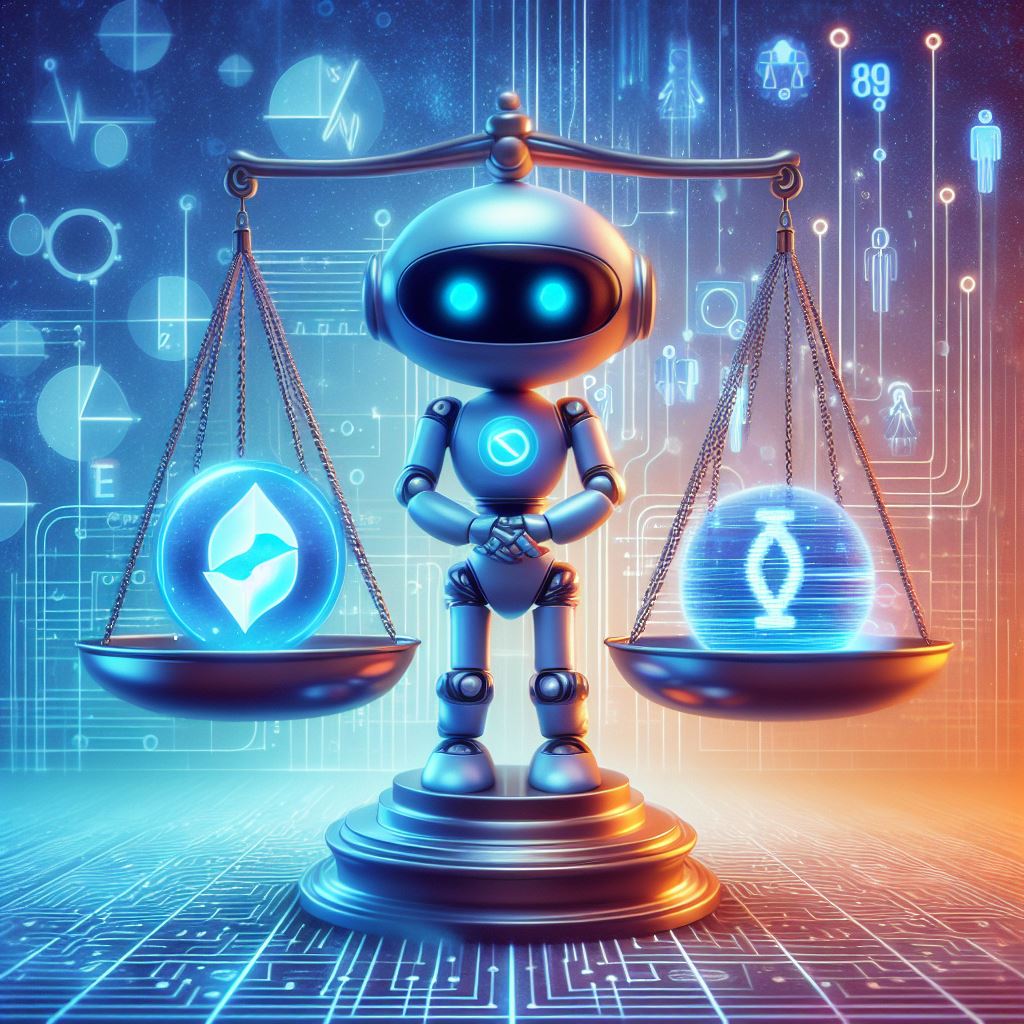Chatbots and the Quest for Privacy in a Personalized World

Digital interactions are as common as handshakes once were, the quest for a seamless customer experience often finds itself at a crossroads with privacy concerns. As businesses increasingly turn to artificial intelligence (AI) to automate and personalize customer service, striking the right balance between convenience and confidentiality becomes critical. In this exploration, we delve into the strategies and technologies that are shaping the way AI-driven chatbots manage this delicate equilibrium.
The Dawn of the Digital Assistant Convenience at a Cost?
The rise of AI chatbots as digital assistants in the customer service realm has been meteoric. They promise round-the-clock availability, instantaneous responses, and a level of personalization that could only be dreamt of a decade ago. However, the underbelly of this convenience is the vast amount of personal data these bots must handle. From mundane shopping habits to sensitive personal information, chatbots are privy to a treasure trove of user data.
Understanding the potential implications of this data harvesting is paramount. The Cambridge Analytica scandal and the subsequent public outcry made it abundantly clear that the management of personal data is not just a technical issue, but an ethical imperative. Emboldened by such incidents, regulatory frameworks like the General Data Protection Regulation (GDPR) in Europe have taken shape, mandating that consumer data be handled with newfound reverence.
Businesses must now navigate the labyrinth of compliance while ensuring that the allure of their AI offerings remains untarnished. This balance is not a mere operational concern; it is at the core of consumer trust.

Behind the Curtains Technologies Safeguarding Privacy
The privacy versus personalization debate necessitates technological mediators. Innovations in AI and cybersecurity are stepping up to this task in intriguing ways.
Encryption: The Shield
At the most fundamental level, encryption acts as the shield for data in transit and at rest. Secure sockets layer (SSL) encryption and end-to-end encryption are commonplace, ensuring that data, as it moves from user to server to chatbot, remains decipherable only by the intended parties.
Anonymization and Pseudonymization: The Cloak
Anonymization and pseudonymization are techniques used to obscure user identities. By either stripping away identifiable information or replacing it with artificial identifiers, these methods ensure data can be utilized without exposing personal identities.
Federated Learning: The Discreet Tutor
Federated learning is a relatively new approach where AI models are trained across multiple decentralized devices or servers holding local data samples, and insights are aggregated without exchanging the data itself. This means the chatbot can learn and evolve without centralizing personal information, mitigating privacy risks.
Differential Privacy: The Balancer
Differential privacy is a system for publicly sharing information about a dataset by describing the patterns of groups within the dataset while withholding information about individuals in the dataset. It provides a mathematical guarantee that the privacy of individual data entries is protected.

Strategies That Bind Technology and Trust
Tech solutions are only one side of the coin; strategies that foster transparency and give control back to the user are as vital.
Clear Communication: The Trust Builder
AI-driven platforms need a communication strategy that explicitly states what data is collected and how it is used. Privacy policies and terms of service must be digestible, not shrouded in legalese, encouraging users to make informed decisions.
User Empowerment: The Control Returner
Giving users control over their data is empowering. Features such as data access portals, where users can view, edit, or delete their own data, are becoming standard. Additionally, the option to opt-out of data collection or AI interaction altogether is an exercise in respecting user boundaries.
Regular Audits: The Compliance Ensurer
Routine audits of AI systems and privacy practices ensure compliance with laws and serve as a health check for the system’s ethical operations. Conducted internally or by third-party auditors, these reviews are critical in maintaining user trust and confidence.

The Road Ahead A Balance or a Battleground?
AI chatbots and privacy can coexist, but this balance remains precarious. Businesses need to prioritize privacy as much as they do the advancement of AI capabilities. Harnessing state-of-the-art security technologies and aligning with best practices are steps in the right direction, but continuous evaluation and adaptation are necessary.
The ultimate challenge lies in not only doing what is legally right but also what is ethically responsible. As we march into a future where AI becomes more nuanced and integral to our daily lives, the onus lies with innovators, businesses, and regulators to ensure that this digital future is as secure as it is smart.
The Delicate Dance of AI Chatbots with Privacy
As the digital world conducts its never-ending symphony of innovations, AI chatbots have emerged as the virtuosos, playing the notes of convenience and personalization with deft precision. But as the tempo quickens, another melody demands attention the resonant chords of privacy and security. In this comprehensive reflection, we dissect the methods and mechanisms by which AI-driven customer service platforms are tuning their performance to ensure a concert where personalization harmonizes with user privacy.
The Rise of AI Chatbots: A Tale of Unprecedented Personalization and the Privacy Pitfalls
Within the sprawling, interconnected expanse of the digital realm, AI chatbots have evolved from mere novelties to integral components of customer engagement. They act as tireless conduits of communication, ever-ready to dissect inquiries, process orders, and even anticipate needs. Yet, this extraordinary level of service asks much from the unsung hero behind the scenes data, in its most intimate form.
As users engage with these AI entities, their interactions are laced with invaluable information: from names, addresses, and birthdays, to preferences, quirks, and behaviors. This data paints a detailed portrait of the individual, a portrait that enables the artificial mind to seem all-knowing, all-considerate. The caveat, however, is as vivid as the benefit. Where data flows, so does the potential for breach, misuse, and invasion of the sacred ground of privacy.
The Privacy Awakening
The very thought that one’s personal details could be mishandled stirs a justified discomfort, one that has found its voice in an era where digital mishaps headline newspapers with disturbing frequency. The revelations surrounding Cambridge Analytica not only unearthed the fragility of data privacy but also jolted both consumers and lawmakers into a new consciousness about the stakes involved.
This awakening has seen the birth and strengthening of regulatory bastions like the GDPR and the California Consumer Privacy Act (CCPA), each designed with the formidable task of protecting personal information in a world that increasingly seems to trade in it.
The Business Imperative
For businesses, these developments represent a pivotal challenge. It’s no longer enough to simply field an AI chatbot capable of delivering smooth interaction. Today, that chatbot must be a paragon of discretion, a fortress that guards user information against the siege engines of cyber-attacks, all while maintaining the illusion of effortless chatter.
This dual demand is shaking the foundations of customer service AI. The enthusiasm for deploying the latest and greatest in AI technology runs parallel to an undercurrent of fear about the repercussions of a privacy misstep. Firms are fast learning that trust is the currency of the digital age, and once bankrupt, the road to solvency is tortuous and treacherous.

The Privacy Is in the Details: Encrypting the Lifeblood of AI Chatbots
To appreciate the technical marvels that defend privacy in the arena of AI chatbots, we must first understand the lifeblood of these systems: data. Safeguarding this data is not merely a single act but a multi-layered discipline, with sophisticated technologies serving as the vanguard.
Encryption: The Sentinel
The duty of encryption is storied and revered. By transforming readable data into an indecipherable code, encryption ensures that intercepted information remains useless to the interloper. The SSL encryption prevalent in web traffic and the end-to-end encryption championed by messaging applications are but two examples of this sentinel in action.
However, encryption’s role in AI chatbot technologies must evolve beyond these conventional deployments. Every piece of data, from the moment of its conception to its ultimate archival or deletion, is a potential vulnerability. This requires a comprehensive encryption strategy one that adapts to the many states of data and the countless pathways it may follow.
Beyond Encryption: Innovations in Data Protection
Encryption stands tall, but it does not stand alone. As businesses vie for higher levels of data protection, they are turning to a cadre of supplementary technologies.
Anonymization and Pseudonymization
These two approaches, siblings in intent, obfuscate data to varying degrees. Anonymization strips away identifiable markers, leaving behind data that can contribute to AI learning but cannot betray user identity. Pseudonymization subtly shifts the paradigm, replacing identifiers with fictitious labels that preserve the data’s utility without directly exposing personal links.
Federated Learning: Intelligence without Centralization
The cutting edge of AI learning models offers a promising avenue for privacy-conscious development. By using federated learning, AI chatbots can assimilate user interactions and refine their algorithms without centralizing sensitive data a move that can radically reduce the specter of massive data breaches.
With differential privacy, the conversation around data protection gains a quantitative clarity. This mathematical framework ensures that AI-driven systems can glean the broad-strokes insights necessary for their function without risking the integrity of individual data points. It’s akin to understanding the movements of a swarm without tracking each bee a balance of utility and immunity.

Trust by Design: Ethical Frameworks and User-First Strategies
In concert with technological defenses, human-centric strategies form an equally critical bulwark against privacy erosion. These are the touches that solidify consumer confidence and the ethical standards that guide AI chatbot development.
Transparency: The Cornerstone of Trust
For trust to take root, it must be informed. This demands that businesses articulate their AI chatbots’ data practices with a transparent fervor. A privacy policy should be more than a document of compliance; it should be an educational tool that affirms the user’s understanding and control.
User-Centric Controls: The Empowerment Lever
In furnishing users with the mechanisms to monitor and manage their data, AI chatbots shift from potential overseers to respectful stewards. Whether through data access dashboards or clear-cut opt-out facilities, the power placed back into the user’s hands is a powerful testament to a company’s commitment to privacy.
Audits: The Badge of Vigilance
The dynamics of AI, data, and privacy are not static; they twist and evolve with the landscape. Regular audits of AI practices and privacy policies ensure that a business’s promise to protect user data is not a one-time gesture but a perpetual oath. Conducted with internal rigor or by impartial third parties, these evaluations are critical checks on the health of data privacy practices.
The Evolution of Equilibrium: Preparing for the Future
As the digital realm stretches its borders, the equilibrium between AI chatbot utility and user privacy will be persistently tested. Companies must pledge to walk a path that holds privacy as sacrosanct as innovation. The technologies and strategies outlined here are snapshots of today’s battlefronts, but the war for privacy will be one of perpetual adaptation and foresight.
Ethical considerations are as important as technological ones, and it becomes crucial to advocate for a digital ecosystem that prioritizes the humanity behind each byte of data. The future will not only demand AI chatbots that are smarter and more intuitive but also systems whose veins pulse with the lifeblood of privacy by design.
In the grand symphony of the digital age, may the harmony of personalization and privacy resound evermore.




